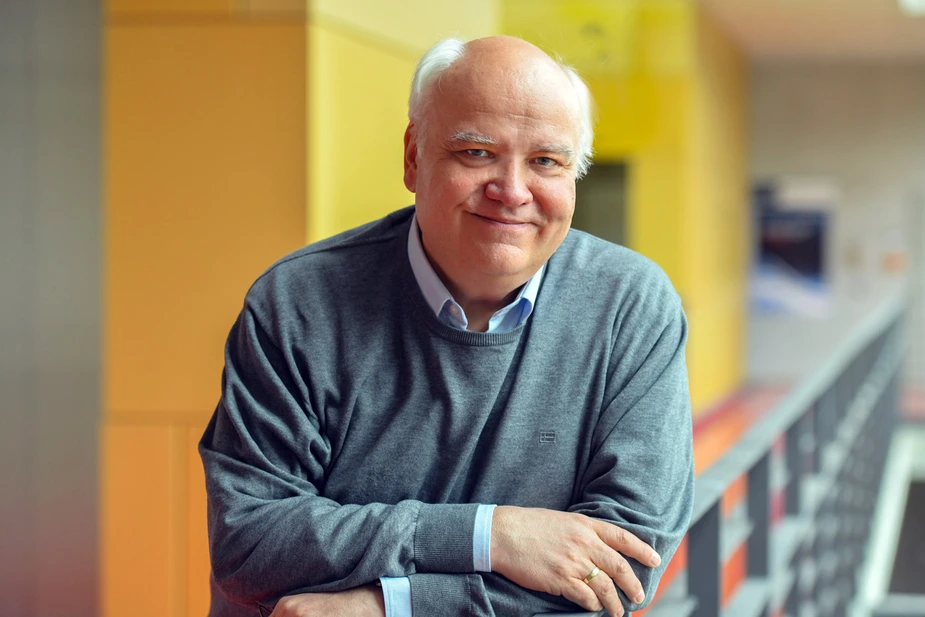Non-Invasive Laser Cancer Diagnosis
Experts from the Ferdinand-Braun-Institute use Raman spectroscopy to help asthma patients
A common cold with a runny nose and a plaguing cough is usually over after a few days. For people with asthma or chronic obstructive pulmonary disease, however, they can be a warning sign. Is this just a harmless infection, or is this a worsening of the disease? The latter can lead to life-threatening respiratory failure. “If it were possible to identify a possible worsening early enough, one could intervene with medication,” says Bernd Sumpf, a laser expert at the Adlershof-based Ferdinand-Braun-Institute (FBH).
This is what the joint project “EXASENS” has set out to do. The FBH is one of nine Leibniz Association non-university institutes that are working together on the project. The aim is to use point-of-care-technologies (PoC) to quickly diagnose chronic respiratory infections. This is achieved using molecules that are isolated from, for example, secretions and the mucous membrane. “Raman spectroscopy is very good at identifying individual molecules,” says Sumpf. Using a laser of a particular wavelength, the excited molecules generate a specific spectrum that is characteristic of that molecule – its fingerprint, if you will.
The staff at FBH develops custom diode lasers for this type of quick and reliable analytic technology, which are tested by the team of physicist Sumpf, the head of the Laser Sensors Lab. “These systems must be very small and compact,” says Sumpf. The semi-conductor laser used here is only half a millimetre times three millimetres large. These tiny and highly precise light sources facilitate the PoC technology, which makes it possible to evaluate risks of diseases on-site or via telemedicine. The aim is to provide patients with protective and non-invasive screenings. In cooperation with Charité and Technical University Berlin, the project HautScan made good progress by examining the effects of cancer medicine that can escape through the skin, resulting in severe side effects.
The samples contain additional biological material that is strongly fluorescent. Physicist Martin Maiwald, who works on Sumpf’s team, shows us some Raman spectrum measurements on a screen. They are relatively weak compared to fluorescence, so we ask him to show us the effects of the Raman effect. “The distance between the Raman line and the exciting wavelength is fixed,” explains Maiwald. When the spectrum of the laser wavelength is shifted for a second measurement, the Raman spectra are also shifted. The fluorescence signals, on the other hand, stay where they are. By taking away those measurements, the Raman lines become visible and the interferences disappear.
The researchers at FBH have also developed a compact two-wavelength laser that makes possible measuring Raman signals outside of a laboratory. This technology was applied during the HypeRam project in cooperation with the Leibniz Institute for Astrophysics Potsdam (AIP) in Potsdam and the Leibniz Institute of Photonic Technology in Jena. This project aims at developing imaging procedures for use during cancer surgery, enabling surgeons to swiftly identify the “borders” of a tumour. The idea is to use spectrometers for imaging that were originally built for application in astrophysics. Using Raman spectroscopy, the aim is to verify whether the analysed molecules are typical for diseased or healthy tissue. The team in Adlershof developed the lasers, Potsdam made the camera systems, while the field test will be done in Jena.
The European project “MIB”, whose participants include research facilities like the FBH but also companies and clinics, also deals with tumour borders. The project aims at facilitating precise and protective cancer diagnosis using an endoscope with medical imaging technology and Raman spectroscopy in the bladder. The FBH is in high demand during such challenging projects. Bernd Sumpf is not surprised: “Worldwide, our research on lasers in Raman spectroscopy is unique,” says the physics professor.
By Paul Janositz for Adlershof Journal
